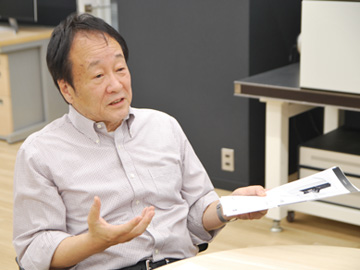
When I was a student in Japan, I read papers in Applied Optics and JOSA. Only two copies were available at the university—one in the main library and one in the department library—and when others had borrowed them, I had to wait my turn. This is one of the main reasons I became a member the Optical Society of America (now called Optica). Though I could not attend the society’s meetings, these journals connected me with the United States and the world.
The journals, shipped to Japan from the United States by sea, arrived two to six months late—not as long a delay as watching a star explode tens of thousands of light years away, but still information from months earlier. This situation continued until the late 1990s and into the 2000s, when scientific journals became increasingly common on the internet—and the world became a much smaller place. Nowadays, information travels around the globe in an instant; papers, published online, can be downloaded anywhere and anytime. This is truly a wonderful development, reducing the information gap between people around the world.
I sometimes wonder, though, if something has been lost in exchange for this convenience. We used to have time to develop ideas without being distracted by our interest in learning about what other people were doing. One reason Japan, as an example, has its own unique culture and traditions may be that for centuries the islands were geographically isolated from the rest of the world. In 2012, in The World Until Yesterday, the Pulitzer Prize–winning scientist Jared Diamond observed that in 1931, on their first contact with Australians, Highlanders in Papua New Guinea ”were scantily clothed in grass skirts, net bags, and headdresses of bird feathers, but in 2006 they wore the standard international garb of shirts, trousers, skirts, shorts, and baseball caps.”
Similarly, today’s information flood seems to leave no room for individuals to think independently—even in science. This risks making the contents of academic journals less diverse and more focused on “trendy” themes. Too much information may interfere with a scientist’s creativity and originality.
Sometimes the most creative and inspired results come when we take steps to rise above the flood. These days, when people go out, they generally bring smartphones and follow a navigation app’s walking or driving suggestions. But, unless I am in a hurry, I purposely avoid the road suggested by the app and take a different one instead. That way, I discover things—cafes, or landscapes—that those following the usual route may not know about. On rainy days, I focus not on the smartphone screen but on what the local people are doing. And in my daily commute, I try, as much as possible, to take a different route every day.
This balancing of convenience and serendipity is similar to how science is developed. The convenience of online information is a powerful tool for scientists. But we also need to know when to follow the less travelled road, which can open new possibilities.
I look forward hearing from you on this topic and future messages at ideas@optica.org.
—Satoshi Kawata,
Optica President
